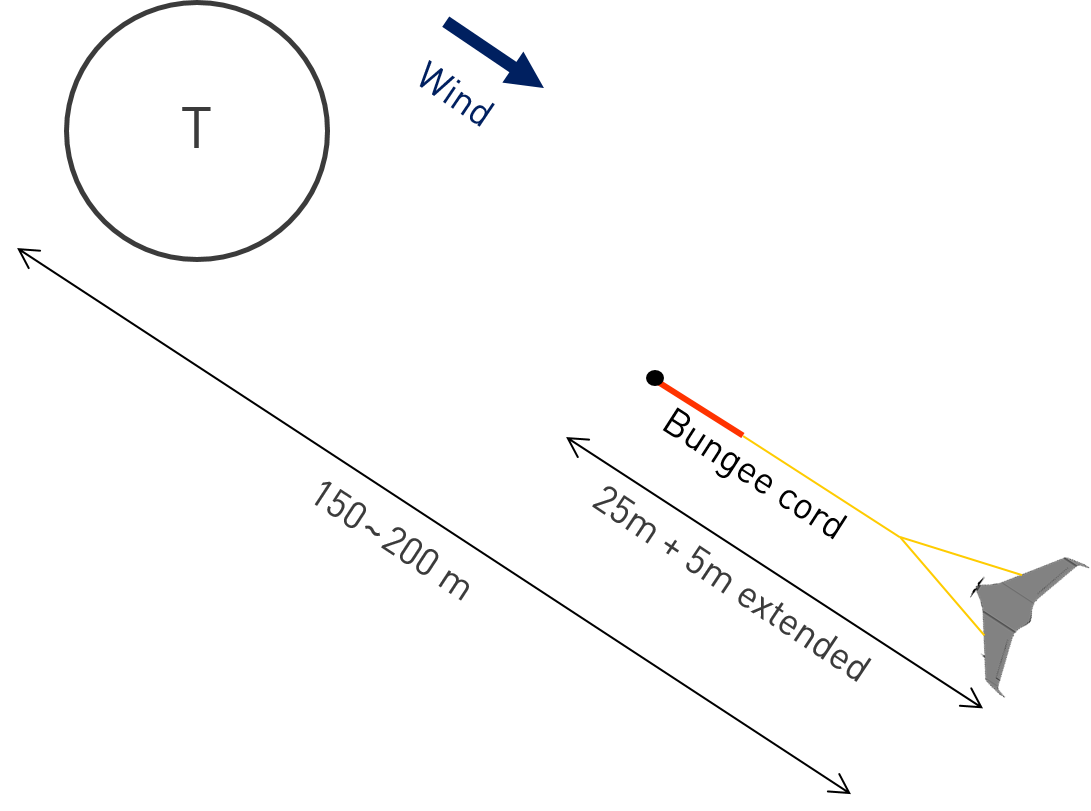
Atlas UAV takes off with the use bungee cord or a handled launcher. The launching systems main purpose is to accelerate the UAV to its cruise speed when taking off. After this the UAV is able to normally fly on its own.
Bungee cord is attached to the ground with a special screw that allows safely to apply tension to the cord.
When setting up the rod in the ground make sure it is firmly attached to the ground and that there are no obstacles that could prevent the UAV from safe launch. Do not place the rod uphill or downhill, because it could affect the pulling angle of the UAV.
Ensure you are launching the UAV into the wind. Headwind helps the UAV to come up to speed faster and prevents stalling at launch.
Follow the checklist and make sure that the when bungee is pulled the UAV will be ready to takeoff. Bungee elastics slowly loose power and will not produce same force if armed for prolonged period of time. First operator places Atlas in Take Off mode, but the mode will not be activated until correct pitch is applied and countdown is done. Then the bungee is stretched enough (approximately 5 meters more than in normal state, to reach tension from 12 to 14 kg). After arming the bungee the UAV will proceed in Takeoff mode by applying correct pitch. This will initiate the countdown and then start the engine. When engine revs up to full power the UAV can be released.
UAV will then fly towards T point and climb until it reaches the desired operational altitude.
Ensure that you are not launching the UAV into obstacles or towards higher elevation. Ensure safe launch for all present personnel and safety for the UAV itself. This can be done by launching in open spaces with approximately 150 to 200 m in front of the launching position.
Follow the rules when selecting the take-off position:
•Place Takeoff point in open area to allow safe ascend.
•Make sure no obstacles are between launching position and Takeoff point.
•Launch always in the headwind
•Do not launch uphill
•Do not have the elastics armed for prolonged period of time
•Allow the UAV to reach the desired altitude in T point and monitor the behavior prior continuing with the mission.
IMPORTANT: Follow same principles even if handheld launcher is used.
 Takeoff Top View |
 Takeoff Side View |
IMPORTANT: It is very important that the take-off is performed upwind and not downwind. Never take-off in the direction of a road, house, trees or other obstacles. There should be enough open space to climb out to safe altitude (point T). Always place T point at least 150 m away from the catapult upwind.
